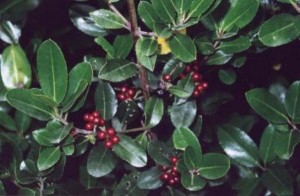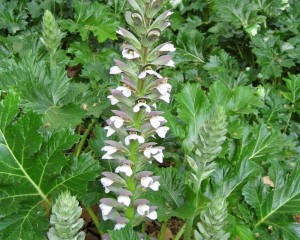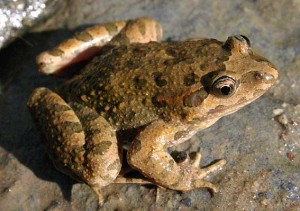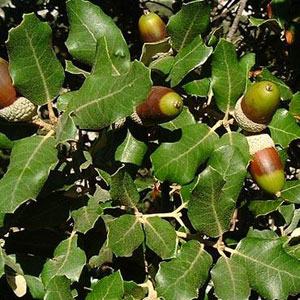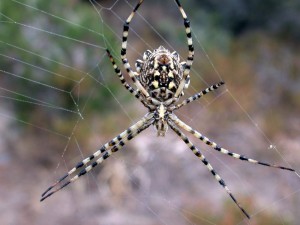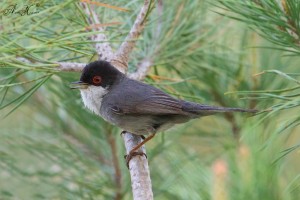The Buskett, located between Rabat and Dingli, is a mixed area of semi-natural woodland and orchards/groves developed along Wied il-Buskett and Wied il-Luq on the uppermost section of a much larger valley system. The site represents one of the most important verdant expanses in the Maltese Islands, bearing a diverse ecosystem with rare habitats and species. Buskett is also highly regarded by the public as one of the most meritorious of protection, and is certainly one of the most frequented areas for recreational purposes.
Buskett has undergone various artificial modifications and incorporates a number of features of historical and cultural heritage value. During the rule of the Knights of St. John, it used to bear game enclosures, irrigation works, fountains and large ponds. The water channel was extensively modified in the process and its banks were reinforced by dry stone rubble and ashlar walls, becoming an artificial channel along most of its course. The original woodland is also known to have been greatly extended during the same period with the intention of improving the site for hunting game. The hunting Lodge (Il-Barumbara tax-Xerrufi) was built during the Grandmastership of La Valette (1557-1568).
The notable Verdala Palace, which today serves as one of the official residences of the President of Malta was originally built during the reign of Grandmaster de Verdalle, with later structural modifications and embellishment by Grandmasters Lascaris and Vilhena. Grandmaster Lascaris is thought to have commissioned the construction four farmhouses (Razzett tal-Bagħal, Razzett tal-Ispirtu, Razzett tal-Bosk and Razzett tal-Għorof) and the alcove known as Is-Sala.
Verdala Palace
The surrounding areas also feature Bronze Age cart ruts, Punic catacombs, Roman quarries and more recent underground flour mills developed in the 1950s.
The diverse environment found at Buskett supports a relatively unique combination of habitat formations that are uncommon locally in such a relatively large coverage, thus providing a refuge for a rich biodiversity of species that are often rare or absent from other locations in the Maltese Islands.
Formerly a permanent stream supplied by two natural freshwater springs, the watercourse is nowadays of an ephemeral nature with water flowing mainly in the wet season. Nonetheless it carries significant quantities of rainwater to support one the most important riparian woodlands locally comprising Populus alba (White Poplar), Fraxinus angustifolia (Narrow-leafed Ash), Ulmus minor (Smooth-leaved Elm) and Laurus nobilis (Bay laurel). Other trees present along the watercourse include Quercus ilex (Holm Oak), Quercus robur (English Oak), Cupressus sempervirens (Cypress), Rhamnus alaternus (Mediterranean buckthorn) and Pistacia lentiscus (Lentisk). The upstream section bears orchards dedicated to the cultivation of Citrus trees. Towards the downstream parts of Wied il-Luq, the abundance of trees decreases and the watercourse becomes progressively dominated by dense stands of Arundo donax (Great reed).
Mediterranean Buckthorn
Prominent climber plants Hedera helix (Ivy) and Rubus ulmifolius (Bramble) entangle around trees and boundary walls throughout the watercourse. One of the dominant undergrowth species is Acanthus mollis (Bear’s Breeches), while the rare Iris foetidissima (Stinking Iris) can also be encountered in localised patches in damp, shaded areas. The locally rare climber Calystegia x lucana (Hybrid Bindweed) and the parasitic plant Orobanche hederae (Ivy Broomrape) are also found at Buskett. The attractive and strictly protected liverwort Petalophyllum ralfsii (Petalwort) also occurs at Buskett.
Bear’s Breeches
A rare water-associated species is Carex divulsa (Grey Sedge), which in Malta, is only known from the Buskett-Girgenti area. In the wet season, the water stream is further enriched with a community of small helophytes composed of Veronica anagallis-aquatica (Water Speedwell), Apium nodiflorum (Fool’s water cress), Ranunculus muricatus (Scilly buttercup), Potentilla reptans (Creeping cinquefoil) and various aquatic algae. The presence of freshwater is also important for fauna, including Discoglossus pictus pictus (Painted frog) and the freshwater snail Physella acuta (Bladder Snail) among other invertebrates.
Painted Frog
Along the higher reaches of the valley, natural vegetation differs and is characterised by different assemblages of drought-tolerant shrubs and trees including maquis species Pistacia lentiscus (Lentisk), Rhamnus alaternus (Mediterranean Buckthorn), Ceratonia siliqua (Carob), Olea europaea (Olive), Laurus nobilis (Bay Laurel), Lonicera implexa (Evergreen Honeysuckle), Prunus dulcis (Almond) and Crataegus spp. (Hawthorn).
Distinctive woodlots are present and mainly based on mature Pinus halepensis (Aleppo Pine) or Quercus ilex (Holm Oak) trees. A cluster of the latter trees is considered to represent a native forest remnant.
Holm Oak
The afforested recreational areas have been planted with Tetraclinis articulata (Sandarac Gum tree), Chaemaerops humilis (Dwarf Fan Palm), Pistacia atlantica (Atlantic Turpentine Tree), Diospyros kaki (Chinese Persimmon), Carya illinoinensis (Pecan), Olea europaea (Olive), Pinus halepensis (Aleppo Pine). Single trees of Araucaria heterophylla (Norfolk Island Pine) and Quercus robur (English Oak) were planted during the British rule.
The high concentration of trees makes Buskett an important site for many wood and leaf litter associated species like fungi including the protected Boletopsis grisea (Pine Boletus) and Sacrosphaera coronaria (Violet Crown Cup).
The subendemic Myrmecophilus baronii (Baroni’s Ants Nest Cricket) is a highly protected insect occurring at Buskett. Other invertebrates of particular interest include woodlice, spiders, moths, wasps, ants, cockroaches, beetles, millipedes and snails, which in the Maltese Islands are known only from Buskett or in an additional few other localities.
The woodland and nearby open spaces are also important for many breeding, wintering and migratory avifauna. Due to the varied habitat diversity it serves as a nesting, feeding and roosting area for birds. Below is a list of birds that can be observed at Buskett (source: http://www.birdinginmalta.com/buskett.htm):
- Resident and Breeding Birds (All year round): Cetti’s Warbler, Zitting Cisticola, Sardinian Warbler, Blue Rock Thrush, Spotted Flycatcher, Chaffinch, Tree Sparrow, Spanish Sparrow.
- Summer Highlights: Eleonora’s Falcon (Scarce), Turtle Dove, Woodchat Shrike, Spotted Flycatcher, Common Crossbill (Rare).
- Winter Highlights: Woodcock, Song Thrush, Blackbird, Redwing (Scarce), Fieldfare (Scarce), Ring Ouzel (Rare), Goldcrest, Firecrest.
- Autumn Highlights: Night Heron, Grey Heron, Purple Heron, White Stork (Rare but seen yearly), Black Stork (Rare but seen yearly), Lesser Spotted Eagle (Rare but seen yearly), Short-toed Eagle (Rare but seen yearly), Black Kite, Marsh Harrier, Montagu’s Harrier, Pallid Harrier (Scarce), Honey Buzzard, Common Buzzard (Scarce), Sparrowhawk, Kestrel, Lesser Kestrel, Hobby, Eleonora’s Falcon, Merlin (Scarce), Nightjar, Scops Owl, Turtle Dove, Hoopoe, Bee-Eater, Roller (Rare), Red-rumped Swallow (Scarce), Tawny Pipit, Yellow-browed Warbler (Rare), Red-breasted Flycatcher (Rare).
- Spring Highlights: Night Heron, Grey Heron, Purple Heron, Turtle Dove, Cuckoo, Nightjar, Hoopoe, Bee-eater, Roller (Rare), Wryneck, Subalpine Warbler, Icterine Warbler, Pied Flycatcher, Collared Flycatcher, Woodchat Shrike, Red-backed Shrike (Rare), Golden Oriole.
Sardinian Warbler
Various species of bats forage and roost in the Buskett area, including Myotis blythii punicus (Maghrebian Mouse-eared Bat).
The karstland area found at Ix-Xagħra ta’ Laroka and Tal-Bosk area consist of mixed scrubland characterised by Thymbra capitata (Mediterranean Thyme), Anthyllis hermanniae subsp. melitensis (Shrubby Kidney Vetch), Rhamnus oleioides (Olive-leaved Buckthorn), Erica multiflora (Mediterranean Heath), Teucrium fruticans (Olive-Leaved Germander) and Teucrium flavum (Yellow Germander). Various species of orchids can be found in these habitats. This is also the only site for the critically endangered Salvia fruticosa (Three-lobed Sage). In the most exposed and disturbed areas, the karstland exhibits a rocky steppe aspect and is dominated by Asphodelus aestivus (Branched Asphodel) and Hyparrhenia hirta (Hispid Beard-grass).
Due to its ecological importance, Buskett enjoys protection under various policy and legal instruments, and is designated as an Area of Ecological Importance, Area of Scientific Importance, Area of High Landscape Value, Tree Protection Area, Special Area of Conservation of International Importance and Special Protection Area, thus forming part of the Natura 2000 network of protected areas.




